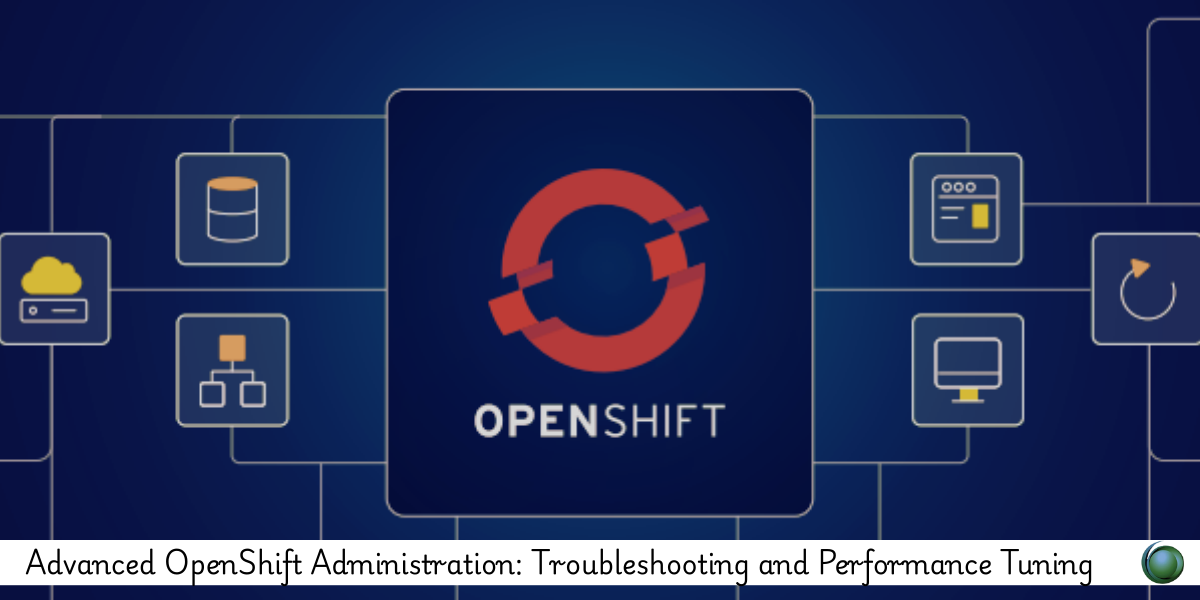Description
Introduction
OpenShift administrators are often challenged with ensuring stability, performance, and availability of enterprise-grade Kubernetes platforms. This advanced course empowers administrators to troubleshoot complex issues, perform root cause analysis, optimize cluster performance, and proactively monitor system health. By the end of this training, participants will be equipped with the tools and techniques to keep OpenShift clusters stable, fast, and production-ready.
Prerequisites
-
Solid understanding of OpenShift platform architecture
-
Hands-on experience managing Kubernetes clusters
-
Familiarity with Linux system internals and networking
-
Experience with OpenShift CLI (
oc) and YAML manifests -
Access to an OpenShift environment for labs/practice
Table of Contents
1. Cluster Health and Diagnostic Tools
1.1 Using oc adm for Cluster Diagnostics
1.2 Health Checks and Readiness Probes
1.3 Gathering Logs and Events
2. Troubleshooting Pod and Container Issues
2.1 Investigating CrashLoopBackOff and Pending States
2.2 Debugging Init Containers and Volume Mounts
2.3 Using Ephemeral Containers for Live Debugging
3. Networking Troubleshooting
3.1 Diagnosing NetworkPolicy Misconfigurations
3.2 Debugging DNS, Services, and Routes
3.3 Packet Capture and Network Tracing
4. Storage Performance and Failures
4.1 Persistent Volume Debugging
4.2 Slow I/O Troubleshooting
4.3 Dynamic Provisioning Issues
5. Node-Level Troubleshooting
5.1 Node Health Monitoring
5.2 Resolving Disk Pressure and Resource Exhaustion
5.3 Managing Node Drain and Eviction Errors
6. Control Plane Performance Tuning
6.1 Tuning the API Server and Controller Manager
6.2 ETCD Performance Optimization
6.3 Monitoring Latency and Bottlenecks
7. Resource Management and Quotas
7.1 Troubleshooting Quota Exceeded Errors
7.2 Managing CPU and Memory Limits
7.3 Best Practices for Resource Requests
8. Application Performance Debugging
8.1 Analyzing Application Logs and Metrics
8.2 Debugging Startup and Liveness Failures
8.3 Using OpenShift Monitoring for Performance Insight
9. Cluster Autoscaling and Capacity Planning
9.1 Tuning Horizontal Pod Autoscaler (HPA)
9.2 Managing Cluster Autoscaler Behavior
9.3 Capacity Planning for Multi-Workload Environments
10. Advanced Monitoring and Alerting
10.1 Prometheus and Grafana Dashboards
10.2 Writing Custom Alerts and Rules
10.3 Alert Fatigue and Noise Reduction
11. Log Aggregation and Analysis
11.1 OpenShift Logging Stack (EFK/ Loki)
11.2 Filtering and Correlating Logs
11.3 Archiving and Retention Best Practices
12. Common Pitfalls and Real-World Case Studies
12.1 Lessons from Production Failures
12.2 Patterns in Misconfiguration and Oversights
12.3 Recovery Playbooks and Incident Response
As OpenShift environments grow in complexity, so does the need for precise troubleshooting and performance mastery. This course has equipped you with advanced tools, diagnostics workflows, and optimization strategies. By applying these skills, you’ll ensure your clusters remain highly available, responsive, and resilient in production environments.







Reviews
There are no reviews yet.